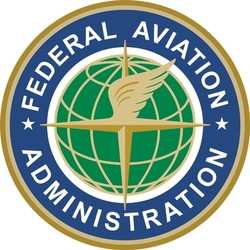Tue, Jul 05, 2011
Two Levels Of Protection For Systems Based On Known
Failures
The FAA has amended the lightning protection airworthiness
standards by establishing new lightning protection regulations for
electrical and electronic systems installed on aircraft
certificated under Parts 23, 27 and 29, and revises lightning
protection regulations for electrical and electronic systems
installed on airplanes certificated under Part 25.

This rule establishes two levels of lightning protection for
aircraft systems based on consequences of system function failure:
Catastrophic consequences which would prevent continued safe flight
and landing; and hazardous or major consequences which would reduce
the capability of the aircraft or the ability of the flightcrew to
respond to an adverse operating condition. This rule also
establishes lightning protection for aircraft systems according to
the aircraft's potential for lightning exposure. The airworthiness
standards establish consistent lightning protection requirements
for aircraft electrical and electronic systems.
According to the FAA, the existing regulations for the lightning
protection of electrical and electronic systems installed on
aircraft certificated under Parts 23, 27 and 29 of Title 14, Code
of Federal Regulations (14 CFR) require the type certification
applicant only to "consider" the effects of lightning. Unlike
system lightning protection regulations for Part 25 airplanes,
these regulations have not been significantly amended since they
were first adopted, and do not reflect current advances in
technology.
Adopted in the 1960s, these regulations require that the aircraft
be protected against catastrophic effects of lightning, but do not
have specific requirements for electrical and electronic system
lightning protection. At the time, most aircraft contained
mechanical systems, or simple electrical and electronic systems.
Airframe components were made from aluminum materials, with high
electrical conductivity, and offered good protection against
lightning. The early 1980s ushered in Part 25 transport airplane
designs that routinely included more complex electrical and
electronic systems. In addition, there has been a trend for
increased use of composite aircraft materials with less inherent
lightning protection than aluminum. As electrical and electronic
systems became more common on Part 25 airplanes, the FAA issued
Sec. 25.1316 on April 28, 1994 (59 FR 22112), specifically
requiring protection for electrical and electronic systems on Part
25 transport category airplanes.

The NPRM, Notice No. 10-05, published
in the Federal Register on April 2, 2010 (75 FR 16676), proposed
the establishment of consistent performance standards for lightning
protection of aircraft electrical and electronic systems against
the catastrophic, hazardous or major failures of the functions
these systems provide.
AEA is encouraging its members to
review the final rule. This rule was developed
specifically for protections for electrical and electronic systems.
As a result, this change in standards will have a direct impact on
avionics certifications and installations in legacy aircraft.
More News
Aero Linx: Transport Canada We are a federal institution, leading the Transport Canada portfolio and working with our partners. Transport Canada is responsible for transportation p>[...]
Gross Navigation Error (GNE) A lateral deviation from a cleared track, normally in excess of 25 Nautical Miles (NM). More stringent standards (for example, 10NM in some parts of th>[...]
From AirVenture 2017 (YouTube Edition): Flight-Proven Booster On Display At AirVenture… EAA AirVenture Oshkosh is known primarily as a celebration of experimental and amateu>[...]
Aircraft Parachute System (CAPS) Was Deployed About 293 Ft Above Ground Level, Which Was Too Low To Allow For Full Deployment Of The Parachute System Analysis: The day before the a>[...]
Also: 48th Annual Air Race Classic, Hot Air Balloon Fire, FAA v Banning 100LL, Complete Remote Pilot The news Piper PA-18 Super Cub owners have been waiting for has finally arrived>[...]
 ANN's Daily Aero-Linx (06.29.25)
ANN's Daily Aero-Linx (06.29.25) ANN's Daily Aero-Term (06.29.25): Gross Navigation Error (GNE)
ANN's Daily Aero-Term (06.29.25): Gross Navigation Error (GNE) Classic Aero-TV: Anticipating Futurespace - Blue Origin Visits Airventure 2017
Classic Aero-TV: Anticipating Futurespace - Blue Origin Visits Airventure 2017 NTSB Final Report: Cirrus SR22
NTSB Final Report: Cirrus SR22 Airborne Affordable Flyers 06.26.25: PA18 Upgrades, Delta Force, Rhinebeck
Airborne Affordable Flyers 06.26.25: PA18 Upgrades, Delta Force, Rhinebeck




